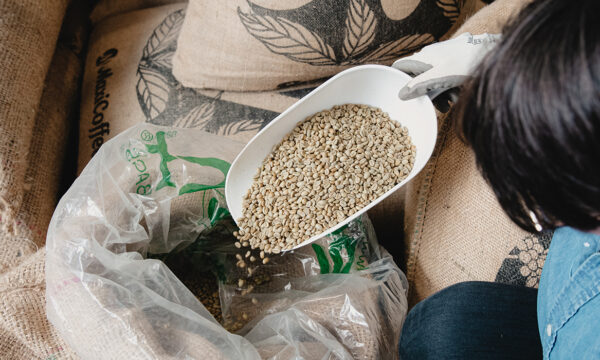
Coffee processing: New experimental processes for green coffees

Written by Julie
Reading time 4 minHave you ever heard of the Honey Process? What about the Pulped Process or the Lavado Process? The creation of a new treatment method of coffee beans generally responds to a very specific problem in a producing country: they can vary from quality or climate concerns or even financial stakes. These methods are less known than the traditional washed or natural processes, but they are becoming more and more popular! Therefore, you are probably going come across these processes very soon in your morning cup! Let’s discover them!
In the 2000s, Costa Rica had an earthquake that significantly restricted the country’s access to water. Coffee farmers were greatly affected and had to quickly find solutions to be able to continue processing coffee without water and not lose their harvest! This is how the honey process came about! To make coffee using the honey process, the coffee farmer carefully sorts through the coffee cherries to find a batch of the same size. Then comes the key stage in this process: pulping. Depending on the type of honey that the farmer wants to make, he will remove different amounts of pulp from the coffee cherry. This will have an impact on the flavour, but also on the final colour of the bean.
For the black honey process, the farmer only removes the skin from the cherry and preserves the majority of the pulp. This processing method is very difficult to master because the beans can quickly over-ferment. However, if the farmer is able to master fermentation, the result offers a cup with a nice amount of sweetness and a full body. Once they are depulped the cherries are left to dry. The fermentation process differs depending on the type of honey. This method requires more work in the first couple of days to dry the cherries out quickly enough. The beans are then depulped and exported. In sum, the darker the colour of the honey (black honey process), the closer it is to a natural process. In contrast, the lighter the colour of the bean (white honey process) the closer it is to a washed process. The idea behind the honey process is to combine the best of these two methods: a coffee both aromatic and sweet.
Created in Brazil in the 70s, this processing method is similar to the black honey process. It was created by farmers to speed up the drying time of the cherries, compared to the honey process, to achieve better profits. The drying stage is therefore quicker than natural coffee. The final result offers a coffee that is typically sweet and full-bodied, which is perfectly suited to Brazilian coffee.
The wet hulled processing method is used exclusively in Indonesia. In a country where the humidity is about 80% all year long, it is necessary for coffee farmers to find a way to significantly reduce the drying time in order to stop the coffee cherries from over-fermenting as well as to stop moulding.
For the wet hulled process, the coffee farmer starts by sorting and depulping the coffee cherries, just like washed coffee. They are then put into a bag or submerged in water for 12 hours, the aim being to soften the mucilage in order to be able to wash the coffee beans. They are then pre-dried for 2/3 hours in the sun.
This stage allows the farmer to remove the parchment skin before the final stage of drying the coffee beans, which can unfortunately damage the grains as they are still fragile at this stage. This method gives the coffee a lot of body and sweetness. They are normally found in espresso blends or used in Italian coffee makers. If you would like to taste one, do not choose one according to its aroma or acidity, but for the texture that it gives your drink. Finding a process that worked was the real aim of the wet hulled method, well before the quality of the final coffee.
Mainly used in Central America and in the South, this processing method is basically the same as the washed process, but a pre-fermentation stage lasting 12-24 hours in a bag is added to the various processing stages. The idea behind this process was to obtain the sweetness of a natural coffee in the first hours of processing and then to obtain the aromatic lightness of a washed coffee. The result has a similar profile to a washed coffee but with a sweetness that is a little bit more pronounced. The terminology “semi lavado” comes from Colombia. The other countries normally use the term “reposado” but they both refer to the same processing method.
By now you (almost) know everything there is to know about coffee processing! We hope that this article will guide you in a quest that is even more difficult than finding the Holy Grail: finding a coffee that you like!
Discover all of our articles
This article is a treasure trove of coffee knowledge! It expertly explains various processing methods, enriching our understanding of coffee’s journey from bean to cup. A must-read for any coffee enthusiast!
Glad that you liked this article and hope it was helpful for you to learn more about coffee processing methods 🙂